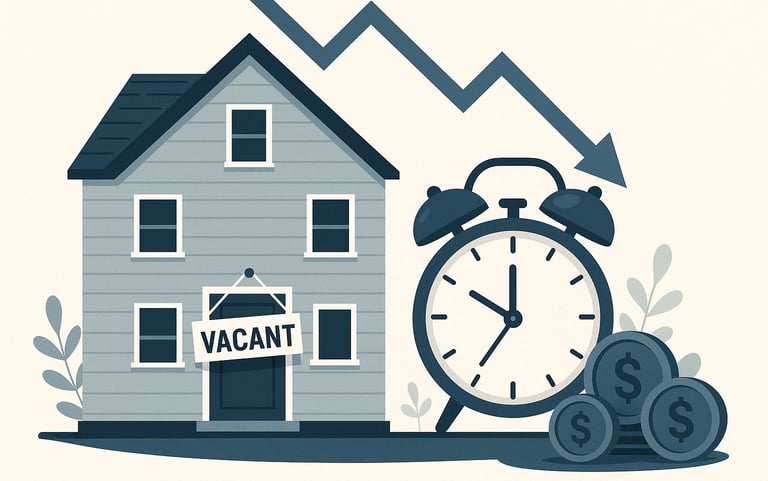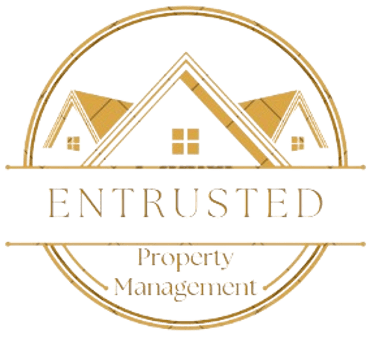The Hidden Costs of Vacancy:
Why Every Day Empty Hurts Your ROI


Image: ChatGPT.com
In property management, time is money—literally. Every day a rental unit sits vacant, landlords lose more than just a month’s rent spread over 30 days. Vacancy creates a ripple effect of lost income, additional expenses, and missed opportunities that can quietly erode your return on investment (ROI).
1. Lost Rent Is Just the Beginning
The most obvious cost of vacancy is lost rent. If your property rents for $1,800 per month, each vacant day costs you about $60. But that’s just the surface. While your property sits empty, you’re still responsible for mortgage payments, insurance, utilities, HOA fees, and property taxes. These expenses don’t pause when tenants move out, meaning your cash flow bleeds even faster than most landlords realize.
2. Increased Turnover Costs
Vacancies also trigger turnover expenses—cleaning, repainting, minor repairs, and advertising all add up. If the property stays vacant too long, you may even need to refresh the landscaping or re-stage the home to keep it appealing. Every turnover is an investment, but the longer it takes to fill, the less return you get on that investment.
3. Decline in Property Condition
Empty homes often deteriorate faster than occupied ones. Without daily use and attention, issues like small leaks, pest infestations, or HVAC failures can go unnoticed—and those minor problems can turn into major repairs. Regular inspections during vacancy are essential to avoid unpleasant surprises when the next tenant moves in.
4. Lower Market Appeal Over Time
As a property sits vacant, it may start to look “stale” in rental listings. Prospective tenants notice how long a property has been available, and long listings can signal that something is wrong—driving down perceived value. To maintain momentum, adjust your marketing strategy or rental price early rather than waiting weeks for inquiries to pick up.
5. Opportunity Cost: The ROI Killer
Every day your property is vacant, you’re not just losing rent—you’re losing compounding returns. That $60 per day could have been reinvested in maintenance upgrades, another rental, or portfolio diversification. Over time, chronic vacancy can lower your annual ROI by several percentage points, reducing both cash flow and long-term appreciation potential.
6. Smart Strategies to Minimize Vacancy
Start marketing early: Begin advertising 30–45 days before a lease ends.
Offer online tours: Virtual tours and digital applications accelerate leasing.
Price competitively: A slightly lower rent filled faster can outperform a higher rent that sits vacant.
Retain good tenants: Renewals are cheaper than turnovers. Proactive maintenance and communication help keep tenants longer.
Use professional management: Property management companies like Entrusted Property Management handle marketing, screening, and maintenance efficiently—reducing vacancy and maximizing ROI.
Final Thoughts
Vacancy is a silent profit drain. While landlords focus on rental income and appreciation, the real ROI often depends on how quickly and consistently properties are occupied. Every empty day represents not just lost rent, but lost opportunity. With smart management, strong marketing, and proactive planning, you can turn vacancies from costly setbacks into rare, short-lived transitions.
For more information on properties located in Harford & Baltimore County, MD, click here.


